Get PeakVisor App
Sign In
Search by GPS coordinates
- Latitude
- ° ' ''
- Longitude
- ° ' ''
- Units of Length

Yes
Cancel
Share ×

Scan the QR code and open PeakVisor on your phone
❤ Wishlist ×
Choose
Delete
Located inland from the Gulf of Tigullio in northwestern Italy, Aveto Natural Regional Park is arguably one of the most beautiful and interesting protected natural areas in the Ligurian Apennines. There are 13 named mountains in Aveto Natural Regional Park. The highest and the most prominent mountain in the park is Monte Penna (1,735 m/5,692 ft).
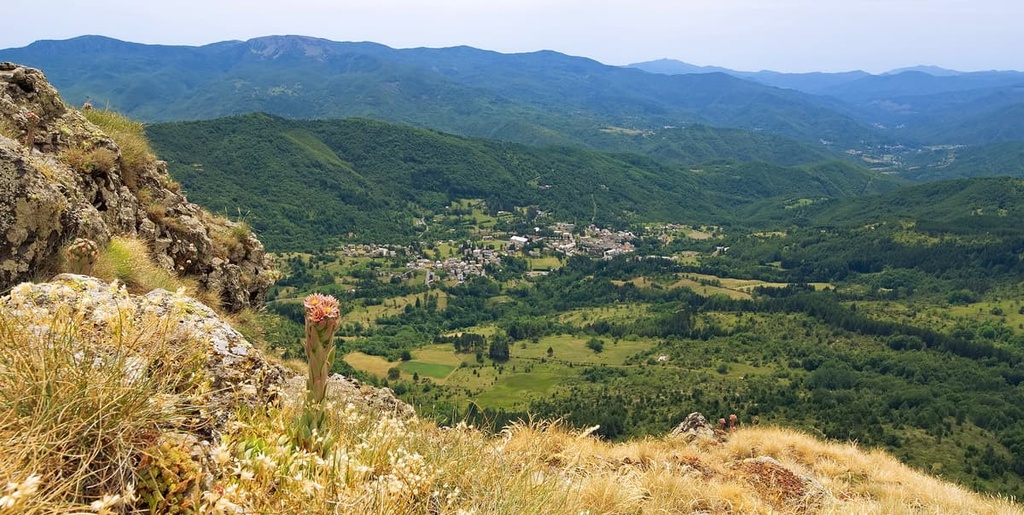
Nestled behind the commune of Chiavari and inland from the Ligurian coast in northwestern Italy, Aveto Natural Regional Park (Parco Naturale Regionale dell’Aveto) is a protected area located in the Ligurian Apennines, close to the regional border with Emilia-Romagna.
Despite its proximity to the sea, the park feels like it’s located a world away thanks to its mountain peaks, wetlands, and vast woodlands. It contains a total area of approximately 30 sq. km (11 sq. mi).
The park encompasses the municipalities of Borzonasca, Mezzanego, Ne, Rezzoaglio, and Santo Stefano d'Aveto across three valleys: Val d’Aveto, Val Graveglia, and Valle Sturla.
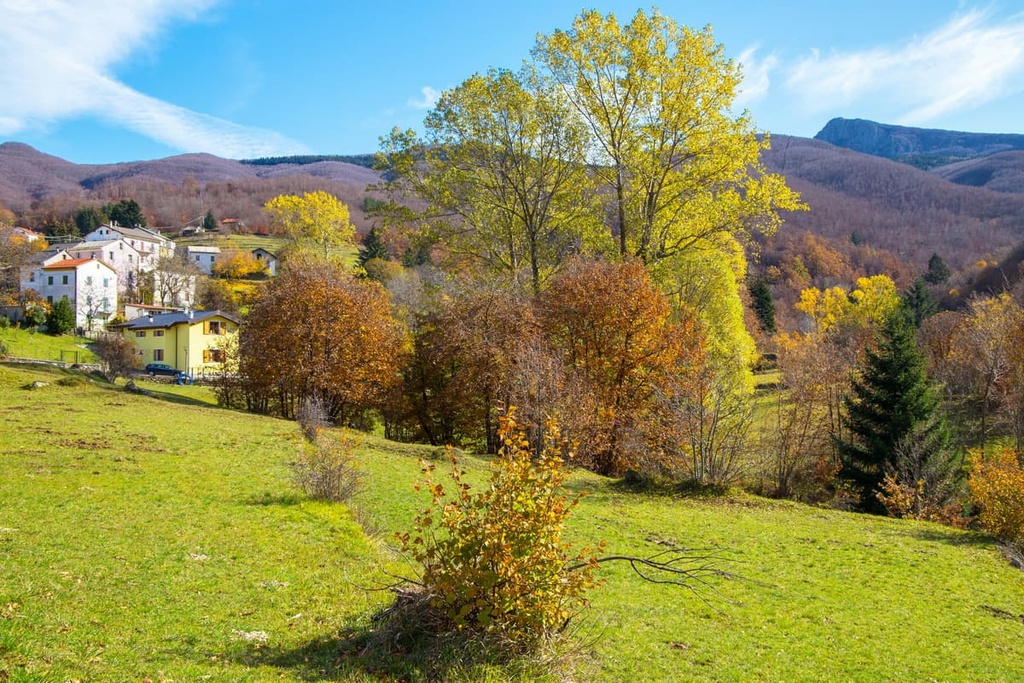
Aveto Natural Regional Park is located within driving distance of a number of other protected areas near the city of Genoa. This includes Parco Naturale Regionale di Portofino to the south and both Parco Regionale dell’Antola and Parco Naturale delle Capanne di Marcarolo to the west.
The landscape in Aveto Natural Regional Park is the result of past tectonic movements and glaciations that formed and created the Apennines mountain range.
The highest peaks in the park are Monte Penna (1,735 m/5,692 ft) and Monte Aiona (1,701 m/5,580 ft). Both of these peaks feature ophiolite, which is a type of rock that consists of a mix of peridotites, serpentinites, gabbros, and basalts that originated from the bottom of an ancient ocean basin.
At the foot of Monte Aiona, you’ll also find Pietra Borghese, a mass of peridotite rich in ferrous minerals, which gives it strong magnetic properties.
In fact, if you use a magnetic compass close to the rock, you’ll see the needle moving in different directions. If you hit the rock with a metallic object, you’ll hear a sound similar to that of a bell. The center of the mass of this rock actually belonged to the subcontinental mantle, although it was formerly believed in a local legend that the mass was a fragment from a meteorite that fell from the sky!
Visitors can learn more about Pietra Borghese and other interesting geological aspects of the park by following the dedicated itinerary “Sentiero Ophiolitica. This is a self-guided educational tour of the park that’s dedicated to interesting geological aspects.
Both Monte Ramaceto (1,345 m/4,412 ft) and Monte Zatta (1,406 m/4,612 ft) are instead composed of rocks of more recent sedimentary origin, such as sandstone and argillite.
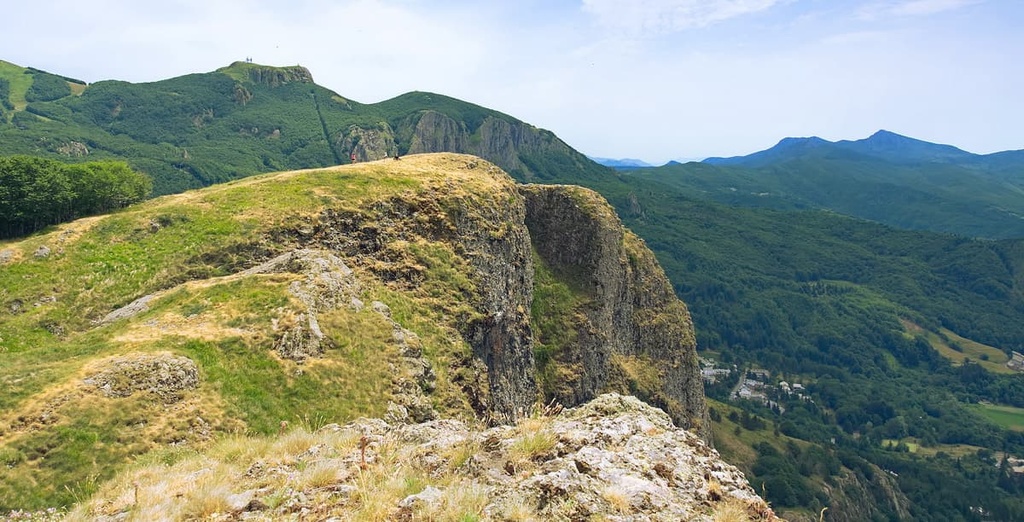
Val Graveglia is of particular geological interest due to its rich variety of rocks from different origins, such as limestone, jasper, clay, sandstone, and ophiolites. The valley is also home to a large number of minerals such as braunite, calcite, reppiaite, and tinzenite. Due to this high regional concentration of valuable minerals, there are several old mines scattered around the area that are no longer in use.
The Gambetesa mine is now home to a mining museum that is open to visitors. Close to the mine, you’ll find another self-guided educational trail called Sentiero Carsologico. This trail leads visitors to discover interesting karst phenomena such as the Pian d’Oneta sinkhole, a large marshy grass basin that is several meters deep.
The highest mountain in Aveto Natural Regional Park is Monte Penna (1,735 m/5,692 ft), which is composed of basaltic rock. Its steep, rocky northern slope is contrasted with the softer, gentler southern slope that is carpeted in beech and conifer woods. From the top, you can admire a beautiful panorama that includes views stretching from the Mediterranean Sea to the Ligurian Alps, Monviso, and the mountains of Aosta Valley.
Mountain peaks, small lakes, and vast woodlands populate Aveto Natural Regional Park. Human activity has altered the landscape over the course of millennia, however, particularly through agriculture and raising livestock. As a result, the region is home to a mix of pastures, terraced belts, and chestnut and hazelnut groves.
The woodland in the park is primarily dominated by tree species such as beech, oak, hornbeam, manna ash, thin river, willows, and alders. Additionally, the park is home to an abundance of wetlands due to erosion from ancient glaciers.

Thanks to these glaciers, the park is now left with a series of small lakes, ponds, and bogs, all of which provide habitats that can support rare plants, amphibians, and insects. Some of the interesting wetlands that you can visit in the park include Lago delle Lame, Lago Asperelle, and Lago Code d’Asino.
The three valleys within the park have distinct ecological characteristics. The high mountain peaks of the park can be found in Val d’Aveto, whereas Graveglia Valley is the most geologically interesting as it boasts rock formations that have enriched the subsoil with rare minerals.
Meanwhile, the Sturla Valley is more typically Ligurian, with olive grows, vegetable gardens, chestnut and hazelnut groves, and pastures. This is the valley that is located closest to the Tigullio beaches, and it offers a mix of some of Liguria’s most interesting environments.
Aveto Natural Regional Park has a rich variety of flora thanks to its many microclimates and environments. Despite its small size, there are around 39 rare and endemic species within the park’s territory. Some of these plants include Primula impolverata, Aquilegia alpina, Viola calcarata, Costolina appenninica, and Genista salzmannii.
There are also several glacial relicts that are still present today in the park. These include the alpine cliff fern, several species of sphagnum moss, sundew, Austrian leopard’s bane, Alpine Anemone, and marsh marigold.
Other interesting plants found in the park include species of ophiolitic substrates that are able to grow in soils with high magnesium content. Examples of such plants that live in the park include winter daphne, Asplenium serpentinum, boxwood, and wooly fern.
Finally, species such as wild lilies, orchids, golden buttons, columbines, and gentians all thrive in and brighten up the meadows in the park during the spring months with their wonderful pops of color.

The many different environments found in Aveto Natural Regional Park have allowed for a proliferation of a rich variety of fauna in the region.
In recent decades, wolves have returned to the park’s valleys, and roe deer have also made a comeback to this part of the Ligurian Apennines. The roe deer is currently the subject of a repopulation campaign in the region. Wild boars, foxes, beech martens, and squirrels are also common in the park.
The area is an important migratory route for birds of prey and there are more than 60 nesting bird species present in the park, including a few nesting pairs of golden eagles. Other birds that you can spot in the park include goshawks, short-toed eagles, kestrels, and buzzards.
Finally, the park’s wetlands lend themselves well to amphibian species such as spectacled salamanders, geotritone, newts, common frogs, and crayfish.
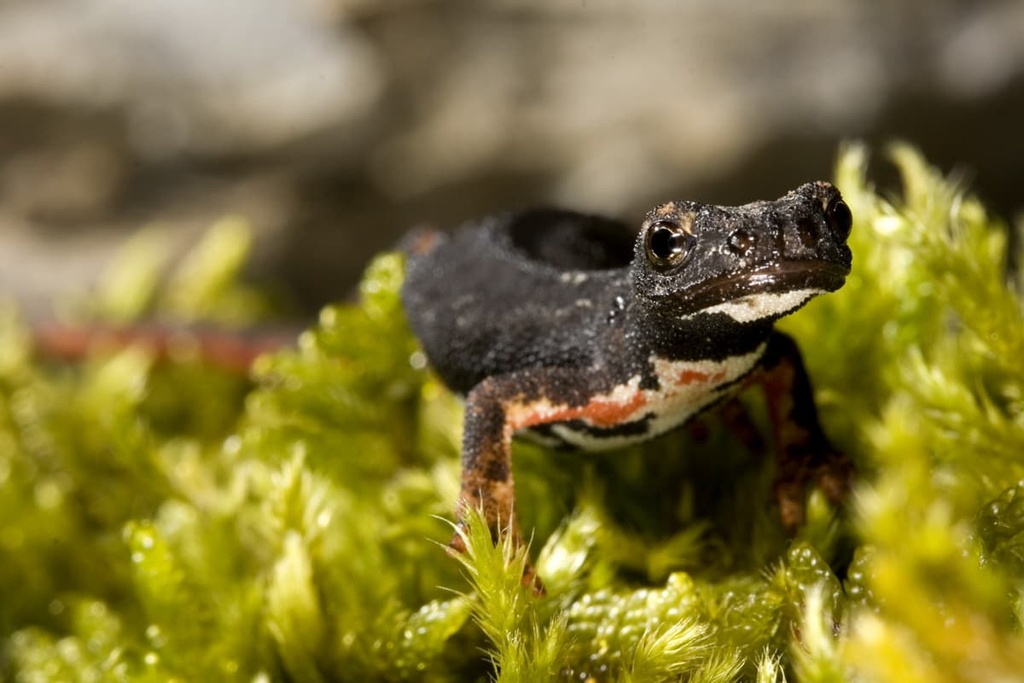
Humans have lived in the area that is now part of Aveto Natural Regional Park for centuries. This human habitation of the region continues to this day as there are a number of notable and historic rural settlements in the area.
There are also a handful of important religious buildings in the area such as the Abbey of Borzone, which dates back to the seventh century and was of religious, cultural, and economic importance in the area.
There were historically many mines in the area, too, due to the rich mineral content of Val Graveglia. The Gambatesa mine can now be visited as a tourist attraction and there is a mineralogical museum in Reppia to tell the history of the area. Aveto Natural Regional Park is also home to several museums and educational areas, as well as a visitor center.
The town of Santo Stefano d’Aveto, which is located in the park, is known for its San Stè cheese, a traditional cheese made in the town.
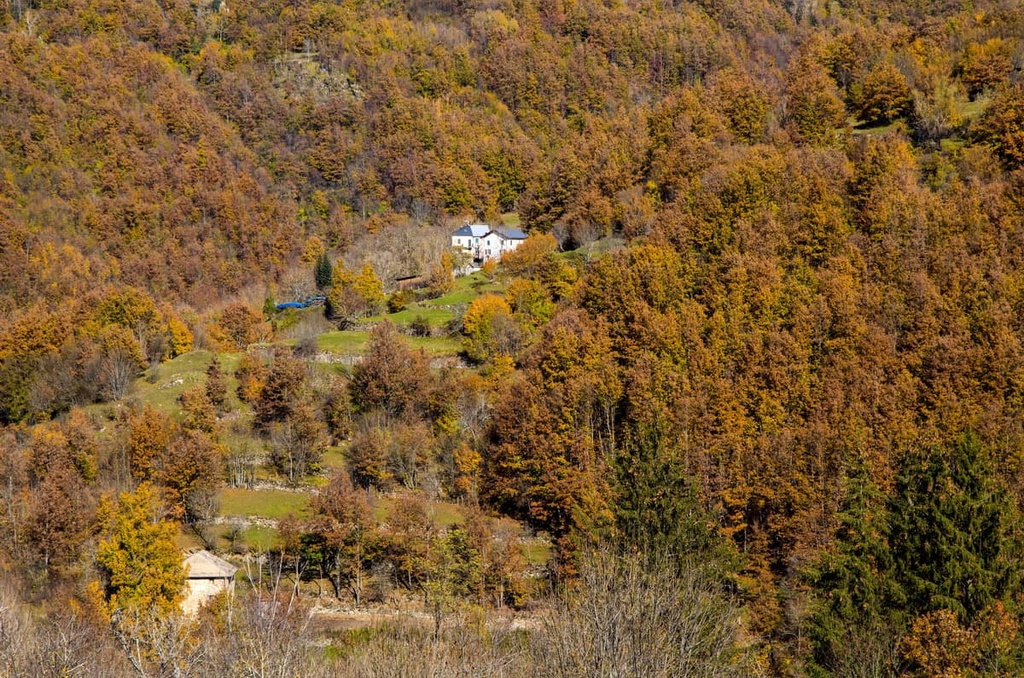
There are plenty of paths to pick in Aveto Natural Regional Park, from multi-day treks passing through the park to day hikes and educational routes. Here are some of the best hikes in Aveto Natural Regional Park to check out during your next visit to the region.
The Alta Via dei Monti Liguri (Ligurian High Route) is a multi-day hike that’s broken down into 44 stages. It takes you from Ventimiglia to Ceparana, close to Liguria’s border with Tuscany.
The route follows the mountainous spine of Liguria from the Ligurian Alps into the Apennines. It then traverses Aveto Natural Regional Park during stages 31–35 from Passo di Ventarola to Colla Craiolo.

The Monte Ramaceto loop route (Anello del Monte Ramaceto) takes around 6 hours to complete. It starts and ends in Ventarola, and it passes through Faggeta del Liciorno, Monte Ramaceto, and Passo della Crocetta. Although this is not a particularly difficult hike, due to its length, it’s advisable to have a good basic fitness level for this itinerary.
The hike starts by the peaceful Rio Liciorno, before entering into beech woodlands. It then follows a hill up to the Ramaceto Ridge. Monte Ramaceto itself offers a spectacular view across the Apennines, the Mediterranean Sea, and over the Po Valley to the Alps. Around half of the itinerary follows the Alta Via dei Monti Liguri.

Short but challenging, the Anello del Monte Penna (Monte Penna Loop) is a challenging route that’s suitable for hikers with a head for heights.
This 2-hour long route starts in Passo del Chiodo. It then passes through La Nave, Monte Penna, Passo dell’Incisa, and Casermetta, with the option to then join the Alta Via dei Monti Liguri to Passo della Spingarda. Alternatively, you can stay at the rifugio Pratomollo if you want to break this hike up into shorter trekking days.
This hike is best enjoyed in the late summer and early autumn when the leaves start to change color and provide a vibrancy to the landscape.
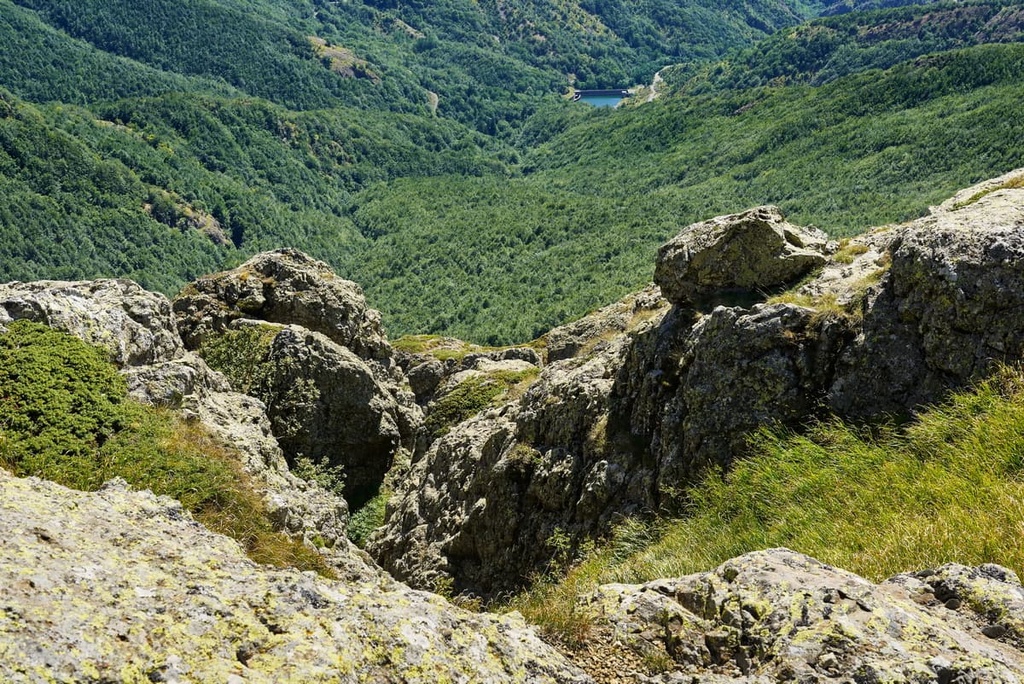
On the Anello del Monte Aiona (Monte Aiona Loop), you’ll experience a variety of environments such as beech woodlands, wetlands, and glacial features.
This route takes around 4 hours to complete and starts from Passo della Spingarda. It then passes through Quadrivio del Dragonale, Passo del Cereghetto, Passo Prè de Lame, and Monte Aiona.
Due to the magnetic nature of the rocks in the area, compasses do not function around the summit of Monte Aiona. This is something to keep in mind if there’s low visibility in the forecast for your hike as you might need to bring a GPS unit for navigation.
Abundant wetlands and beautiful views characterize this incredible 6-hour hike to Monte Zatta.
As you hike along this route, you’ll encounter the marshland and sinkhole at Pian d’Oneto. You’ll also have a good chance of spotting a number of birds of prey, such as the short-toed eagle, buzzard, kestrel, or hen harrier around Monte Chiappozzo, which is an important migratory route. This route also passes through one of Liguria’s most beautiful beech woodlands.

Although most major cities and towns in Liguria can be found on the region’s coastline, there are several small towns with B&Bs and small hotels located within and near Aveto Natural Regional Park.
Here are a couple of places to stay during your next visit to Aveto Natural Regional Park.
Located just 75 km (46 mi) to the northeast of Genoa, Santo Stefano d’Aveto is a small town in Val d’Aveto. It is located by the Aveto River in Liguria within Aveto Natural Regional Park.
The town was likely inhabited since before the start of recorded history. Nowadays, the town is best known as the starting point for trekking, hiking, horse riding, and skiing in the winter months. Furthermore, in addition to its San Stè cheese, the town of Santo Stefano d’Aveto is known for its mushrooms, which are a popular delicacy.
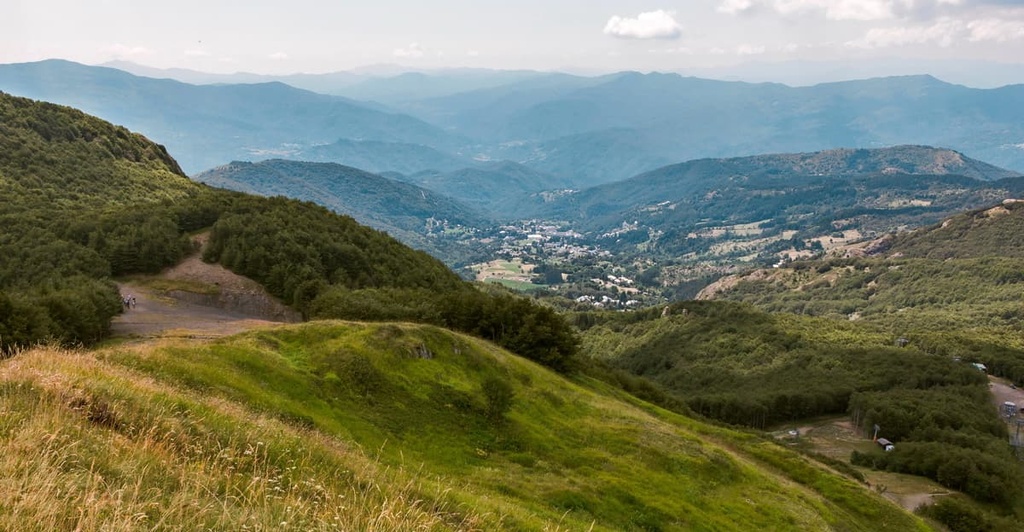
Chiavari is a large town with around 30,000 residents that serves as the main inland access point for Aveto Natural Regional Park.
While in Chiavari, you can walk around the old town center, visit the Palazzo Rocca and its botanical gardens, and enjoy the many local restaurants and bars. From here you can also enjoy the beaches in the summertime, as well as year-round hiking in nearby Sestri Levante and Portofino Natural Regional Park.
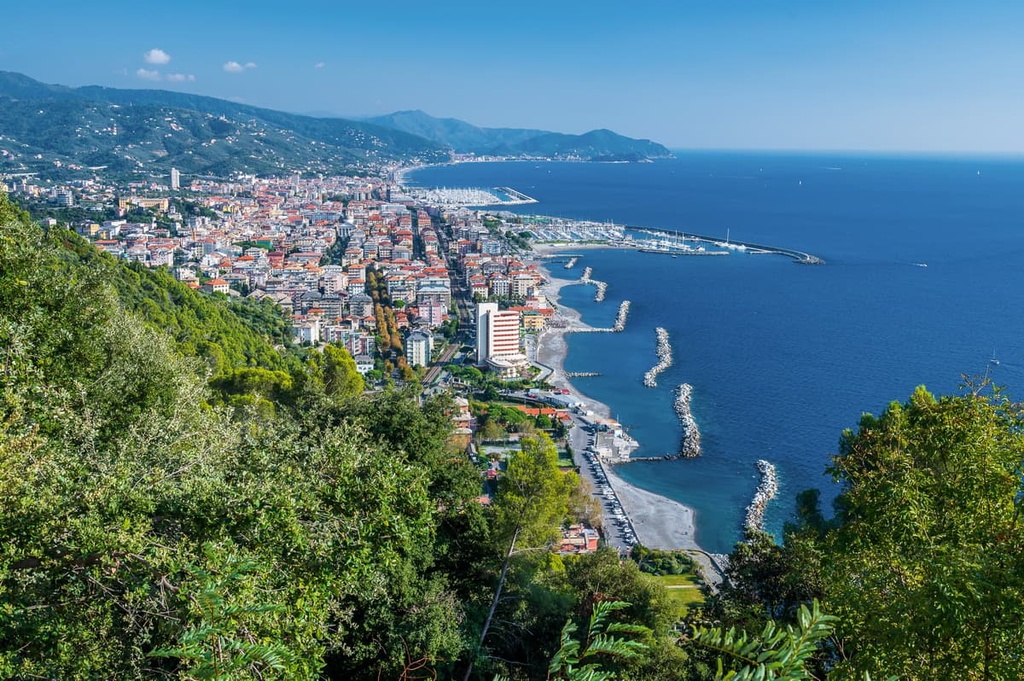
Explore Aveto Natural Regional Park with the PeakVisor 3D Map and identify its summits.








